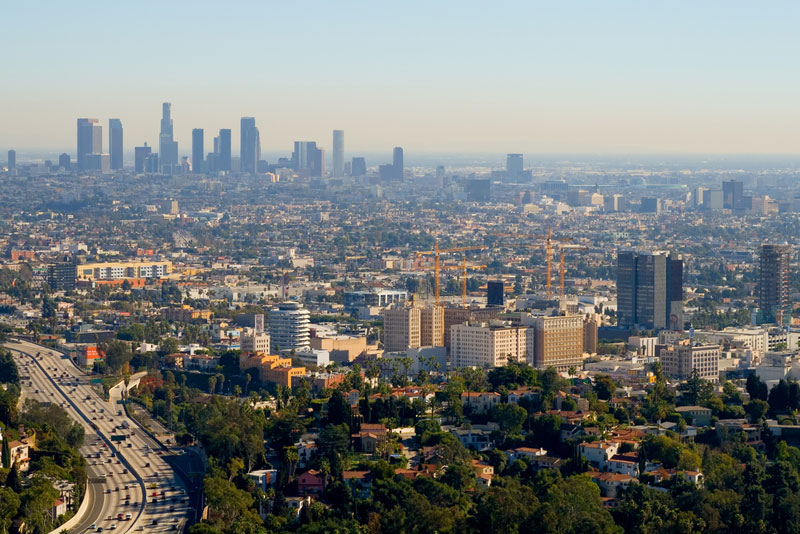LA Pollution Is Losing Its Sting, Study Shows

An "eye-stinging" air pollutant in Los Angeles is decreasing due to stricter vehicle emissions standards in Southern California and the United States, a new study that examined emissions of chemicals in the City of Angels found.
The chemical, called peroyxacetyl nitrate (PAN), is associated with eye irritation during smoggy days. And it's not the only thing declining in the city's air: Ozone is also on the wane, the study found, confirming ozone measurements done by other researchers.
"To most people the important thing is that air quality has improved, but as scientists we want to understand how it has improved," lead researcher Ilana Pollack told Our Amazing Planet. Pollack works with the National Oceanographic and Atmospheric Administration's Earth System Research Laboratory in the chemical sciences division.
"Our work aims to interpret the past and present observations, with the aim of informing future decisions," added Pollack, who is also a research scientist with the Cooperative Institute for Research in Environmental Sciences (CIRES) with the University of Colorado in Boulder.
Trapped in the basin
Ozone is both good and bad for nature. High in the stratosphere, it filters ultraviolet radiation and keeps it from reaching Earth's surface. Closer to the surface, however, it can damage plant life and irritate human lungs.
Both ozone and PAN are major components of smog in Los Angeles, Pollack said. PAN is formed in a series of reactions that involve compounds found in sources like tailpipe emissions, sunlight and molecules with different combinations of nitrogen and oxygen. PAN serves as a store of the nitrogen-oxygen compounds that can be transported over long distances.
Sign up for the Live Science daily newsletter now
Get the world’s most fascinating discoveries delivered straight to your inbox.
The scientists compiled and examined data from research aircraft (some of the measurements were made by the team in 2010, some by others in previous field studies), and also included archived data from roadside monitors and ground-based instruments.
Los Angeles is particularly vulnerable to the effects of ozone because it lies in a basin, Pollack said.
"Precursor emissions and the secondary pollutants formed from them often get trapped in the 'bowl-like' basin of air that is created by the surrounding mountains," she told LiveScience in an email.
Vehicles still dominant source for emissions
Pollack added that her team has no immediate plans to re-examine Los Angeles for pollutants, but that she hopes to conduct follow-up studies.
"Although emissions of precursors have declined, motor vehicles are still the dominant source of emissions in Los Angeles," she said, but added that the improvement is encouraging.
"The cleanup of California's tailpipe emissions over the last few decades has not only reduced ozone pollution in the LA area, it has actually altered the chemistry in the atmosphere and caused the eye-stinging 'organic nitrate' component of air pollution to plummet," she said.
The research was published online May 21 in the Journal of Geophysical Research-Atmospheres and will appear in a future print issue..
Follow Elizabeth Howell @howellspace. Follow us @livescience, Facebook& Google+. Original article on LiveScience.com.

Elizabeth Howell was staff reporter at Space.com between 2022 and 2024 and a regular contributor to Live Science and Space.com between 2012 and 2022. Elizabeth's reporting includes multiple exclusives with the White House, speaking several times with the International Space Station, witnessing five human spaceflight launches on two continents, flying parabolic, working inside a spacesuit, and participating in a simulated Mars mission. Her latest book, "Why Am I Taller?" (ECW Press, 2022) is co-written with astronaut Dave Williams.









